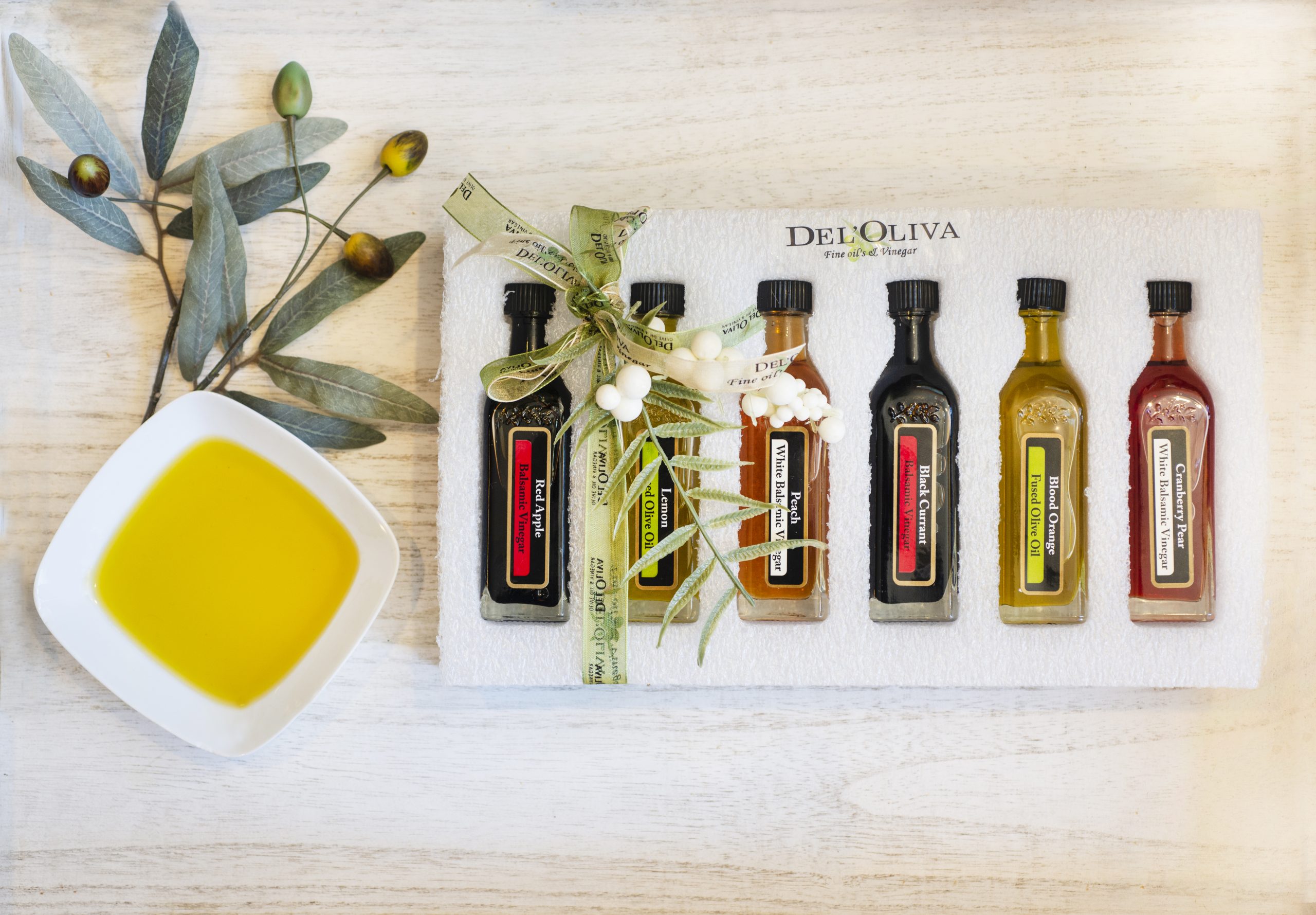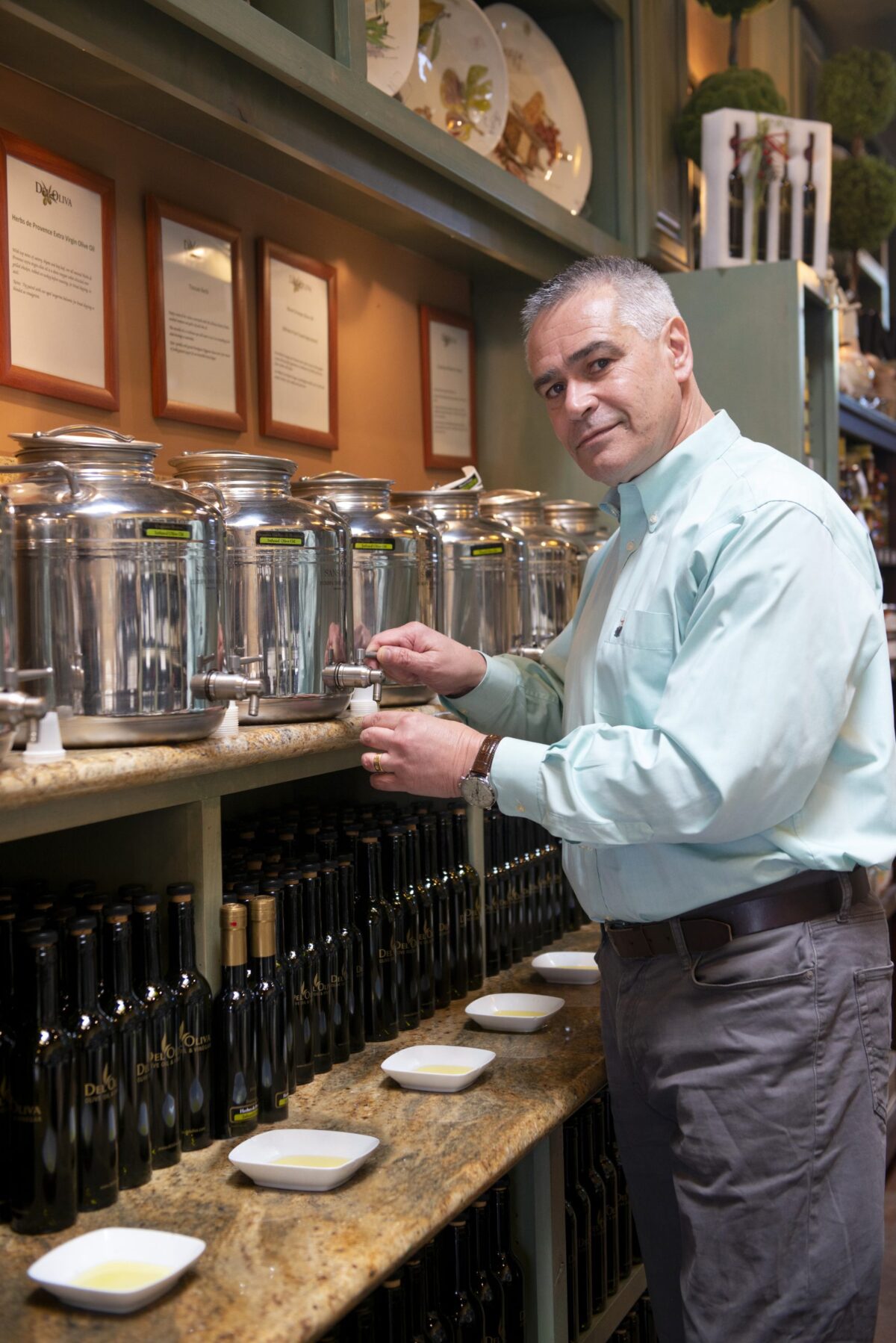“Olive oil should never be oily—if it is, that’s a sign it’s gone bad. Olive oil is really just olive juice. It shouldn’t coat your mouth,” Eddie Sohirad, owner of Del’Oliva, says, handing me a small plastic tasting cup of the Cuvee variety. I take a cautious sip of the oil, trying to notice its nuances on my palate. “Right about now, you’re going to get a spicy feeling in the back of your mouth, don’t panic,” he says.
Eddie was right. The smooth, crisp-tasting olive oil tickles the back of my throat on its way down. “I’m going to need some water,” I say, between coughs.
“We rate olive oil by how many times it makes us cough. We say that’s a one cougher, that’s a two cougher, that’s a three cougher,” Eddie says, only half-jokingly. My question then was, why use an olive oil that’s going to make you cough?
Eddie tells me about some of the beneficial naturally occurring chemicals found in extra virgin olive oil—EVOO, for short. Polyphenols, for example, are responsible for triggering a few coughs but are the source of antioxidants and anti-inflammatory properties in olive oil. Each variety of EVOO contains different levels of polyphenols, and the tickling in the back of your throat is only passing, Eddie assures me.
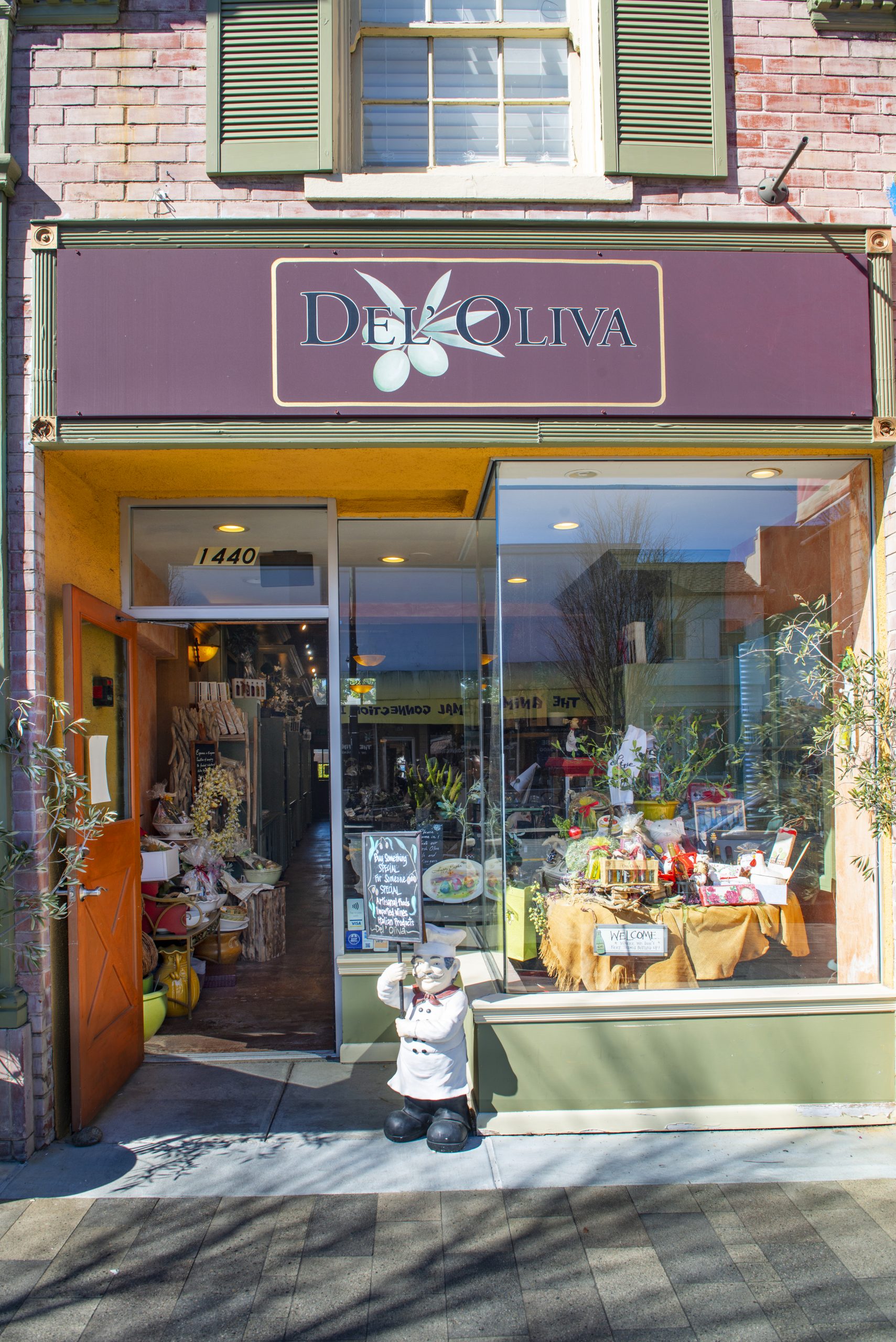
Del’Oliva, a fine oil and vinegar shop in Burlingame, has a storybook red-brick storefront with a green shutter window and Spanish tile roof ornamentation. The spacious-feeling interior, set off by its high ceiling, two aisles full of specialty food items and handpicked wines, welcomes visitors with its Mediterranean vibe. The flow of the store funnels into a semi-private back room used for wine tastings and private parties. The centerpiece of the space is the wall of stainless steel tanks full of extra virgin olive oil, olive oil infusions and balsamic vinegars. This is Eddie’s unofficial classroom, where he walks customers through the process of discerning which variety of olive oil is right for them.
“Naturally, people have a lot of questions when it comes to what they should look for when choosing virgin olive oil, olive oil infusions and balsamic vinegars. This is Eddie’s unofficial classroom, where he walks customers through the process of discerning which variety of olive oil is right for them.
“Naturally, people have a lot of questions when it comes to what they should look for when choosing olive oil. What we try to do is bring it to a level that we can all understand—what’s a good olive oil and how we should use it,” says Eddie.
Eddie and his wife, Homa, opened Del’Oliva in 2011 with the mission to demystify shopping for olive oil by educating the consumer. “I really wanted to make sure people get their money’s worth and get a really good product that’s healthy for them,” says Eddie. Previously, Eddie had owned other stores selling products he wasn’t passionate about. When he connected with an olive oil distributor, they evolved the concept of bringing high-quality olive oil to the public while providing education about the benefits of fresh olive oil.
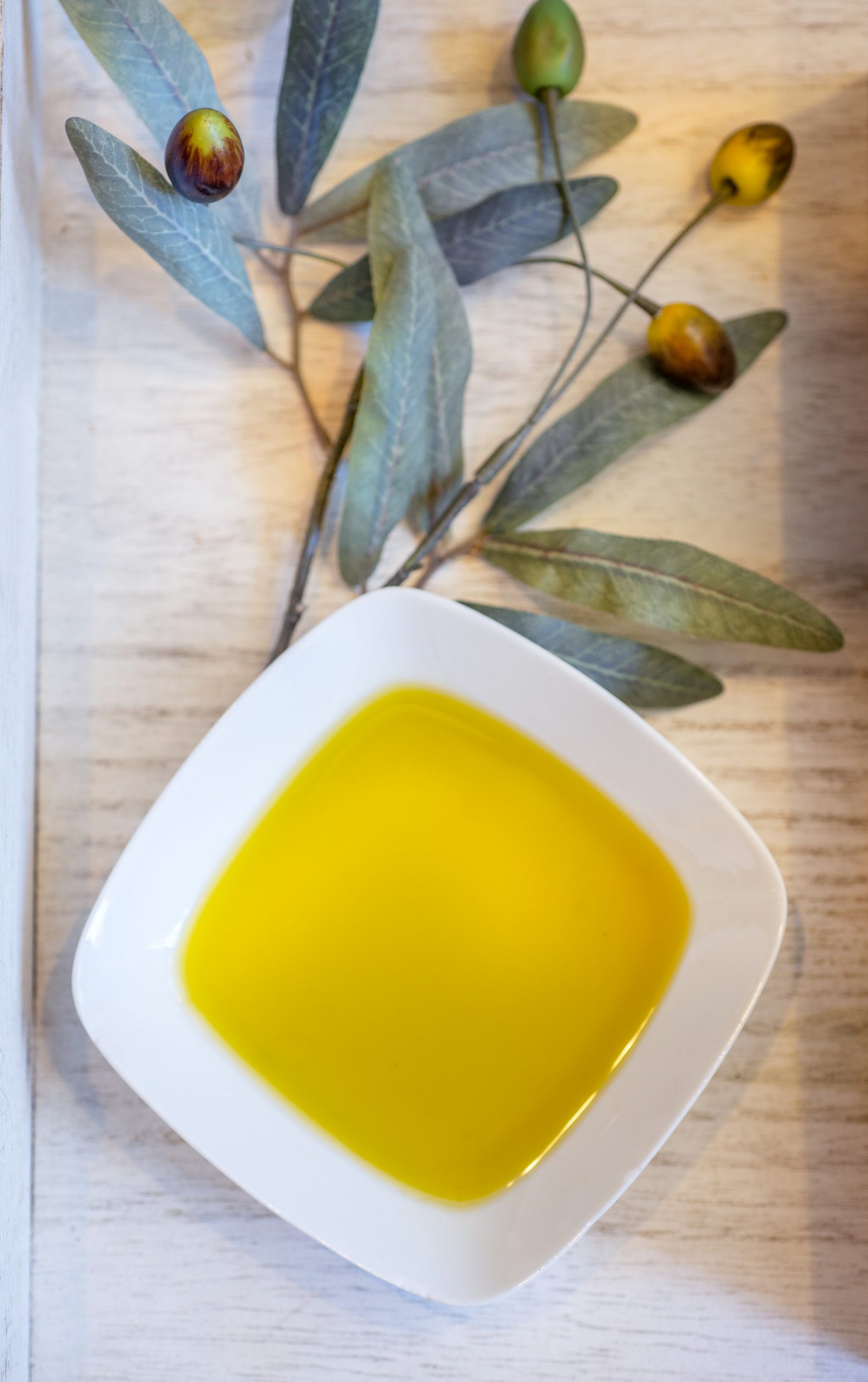
Eddie’s educational efforts have inspired a base of loyal returning customers, who talk about Del’Oliva and give hostess gifts from the shop to friends. This word of mouth brings in new customers who stop in to learn more. Fresh olive oil and on-the-spot taste testing are a winning combination.
“In my opinion, extra virgin olive oil is when the olive is in the perfect condition, ripe for the picking; you would pick it and you would run to the press. The sooner you press, the more attributes you will preserve. You don’t add anything, and you don’t take away anything. What comes out is olive juice, which we call olive oil,” says Eddie.
Terms you might hear in conjunction with extra virgin olive oil like “cold-pressed” or “first-pressed” are redundant because extra virgin olive oil is already those things. If you don’t see the words “extra virgin olive oil” on your bottle, that could mean the olives were picked before they were ripe or that the oil went through additional processing, thereby losing some of its healing properties.
The benefits of EVOO start to dissipate the moment the oil is pressed. Eddie advises his customers to use their oil up within nine months. Most grocery store-bought olive oil brands don’t give you the press date, but Del’Oliva does. “In this store, every six months we switch between the Northern Hemisphere and Southern Hemisphere. My mission is to get the freshest olive oil I can get my hands on,” Eddie says. Right now, Del’Oliva is carrying olive oil from the Northern Hemisphere: California, Spain, Portugal and Greece, with some arriving soon from Italy and Tunisia.
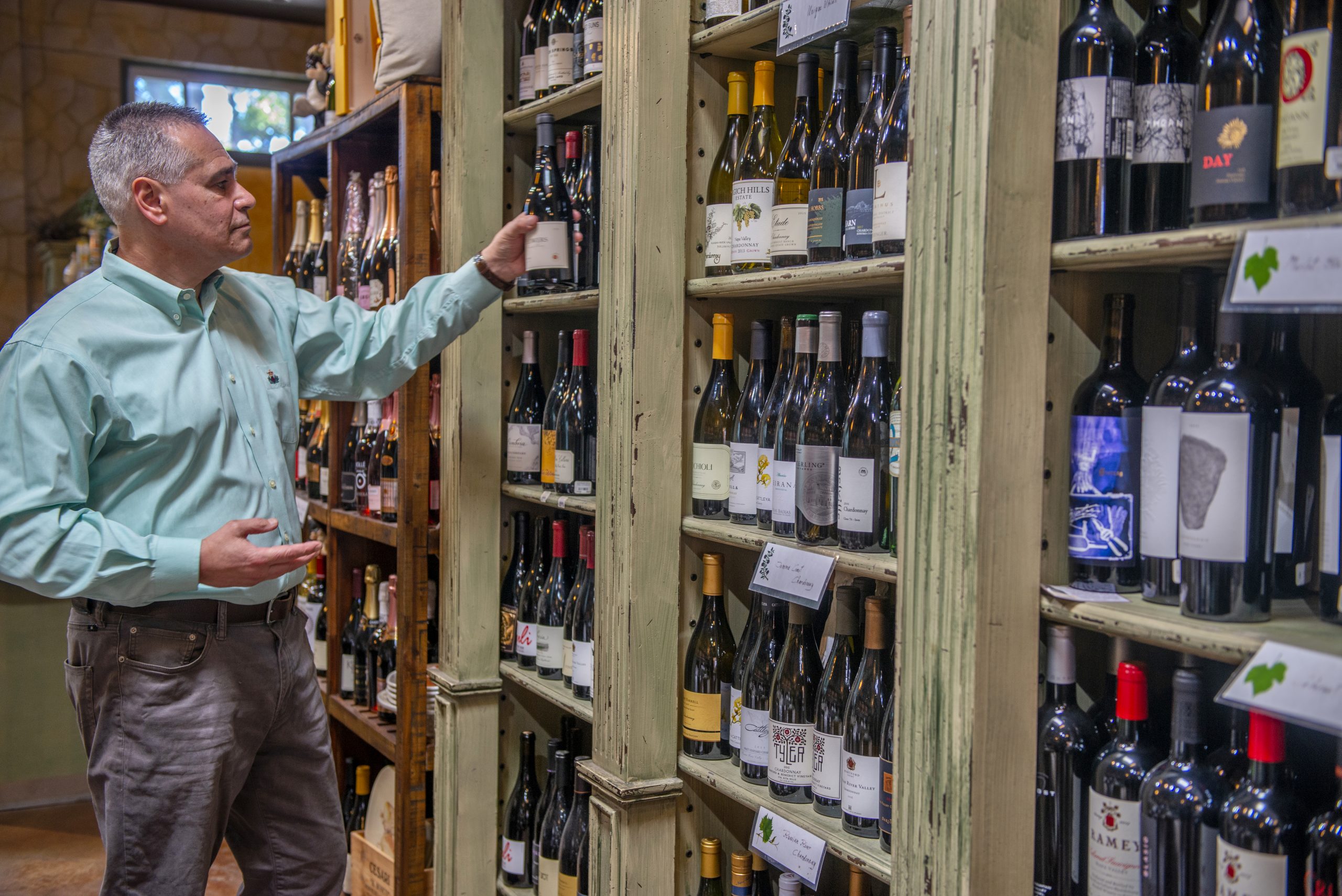
Once you’ve tasted the difference between a mild and fruity Cuvee and an intense and grassy Hojiblanca at the other end of the extra virgin olive oil spectrum, you can start to figure out your preference. Eddie comes alive with excitement as he mixes sweet balsamic vinegar with savory infused olive oil like Gravenstein Apple white balsamic vinegar and olive oil infused with basil for tasting. He suggests drizzling the mixture over a salad. He also shares culinary possibilities like leaving a splash of Dark Espresso balsamic out on a plate for a few days to allow the vinegar to evaporate, leaving behind thick syrup that could become the perfect ice cream topping or pork chop glaze.
“Everyone should have a good bottle of extra virgin olive oil and a good traditional balsamic vinegar in their home,” Eddie advises. “This is what we all need; everything else is just for fun, for different occasions.” At any given time, Del’Oliva offers between five and eight extra virgin olive oils from all over the world and about 20 infused oil flavors. Customers can also find about 30 to 40 infused balsamic vinegars ranging from Sicilian Lemon to Tangerine Pomegranate.
The endless flavor combinations and profiles available at Del’Oliva make it difficult to choose which ones you’ll bring home. “When you have fresh olive oil, and you start using it, it will make such an amazing difference in your cooking and your health,” Eddie says. “But don’t buy it if you’re going to store it. Your olive oil is better today than tomorrow. You want to buy it as fresh as possible, use it and then buy it fresh again.”
